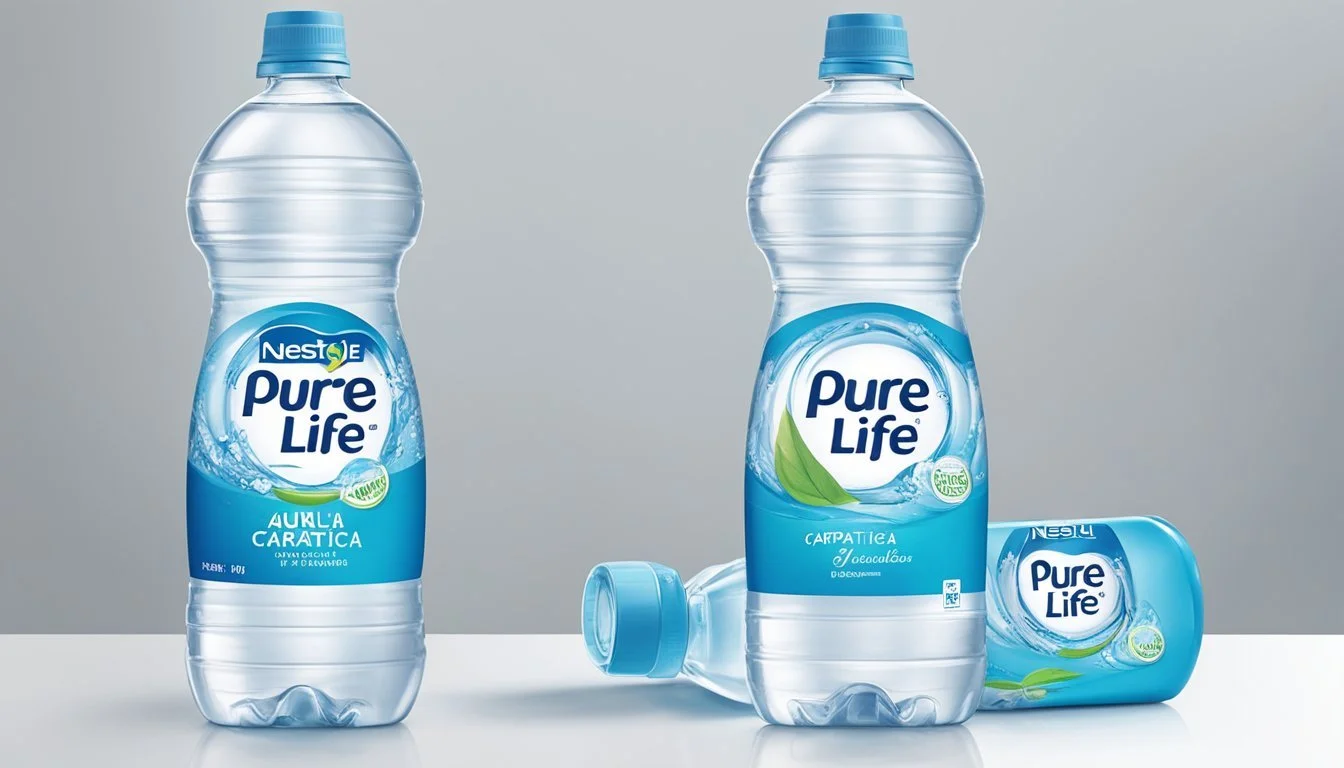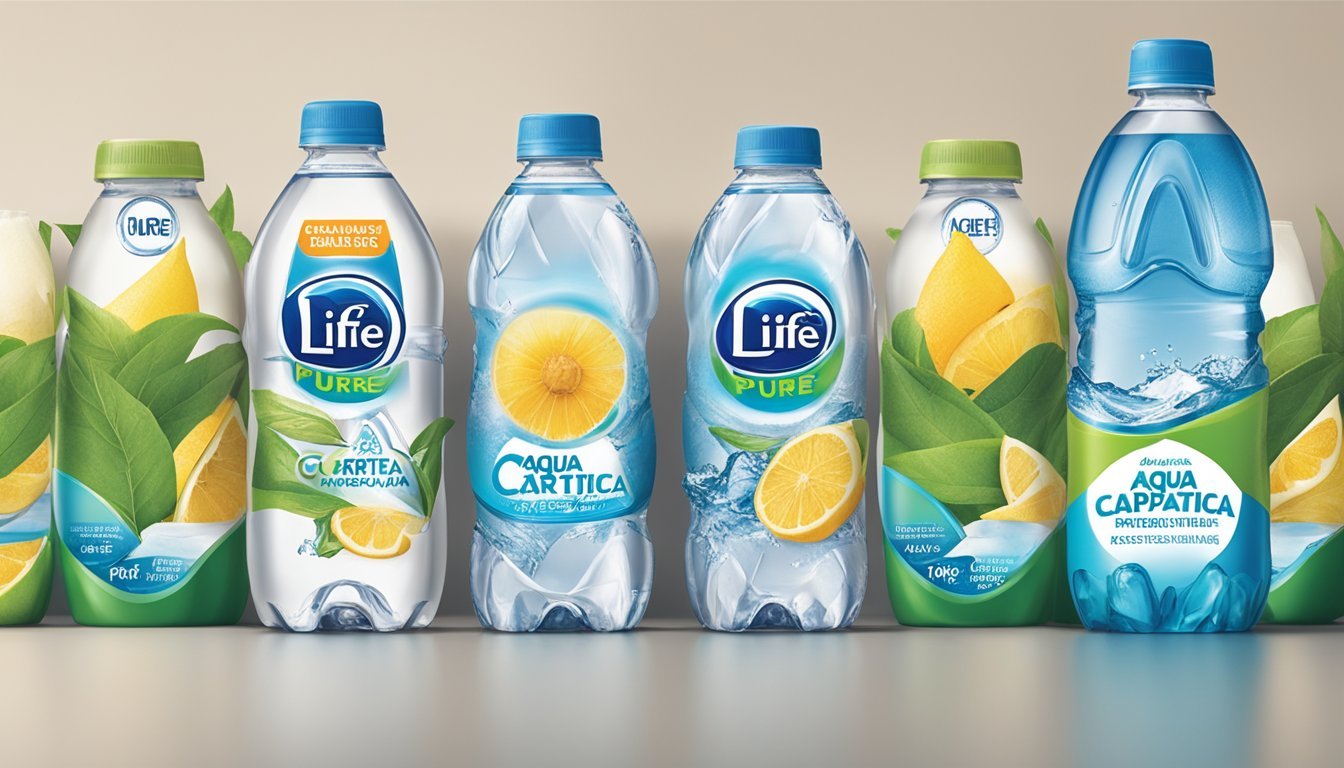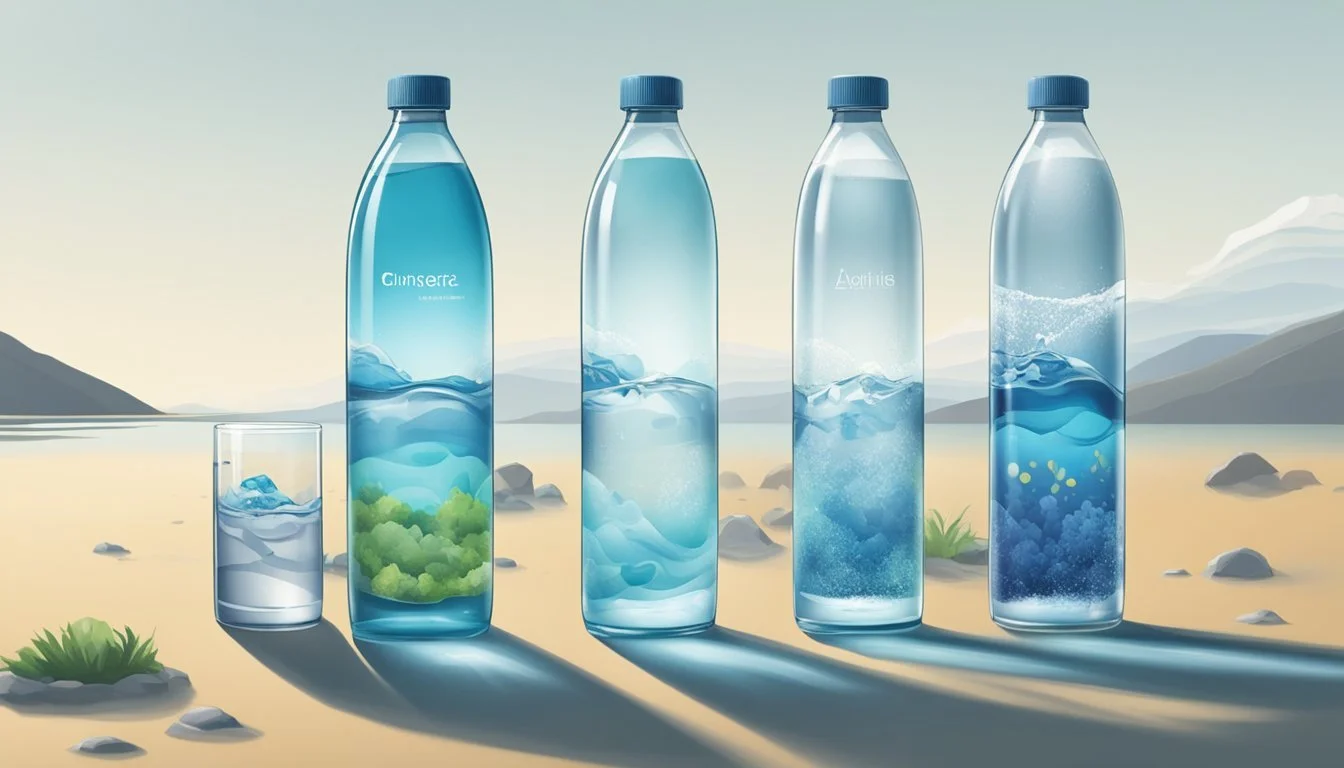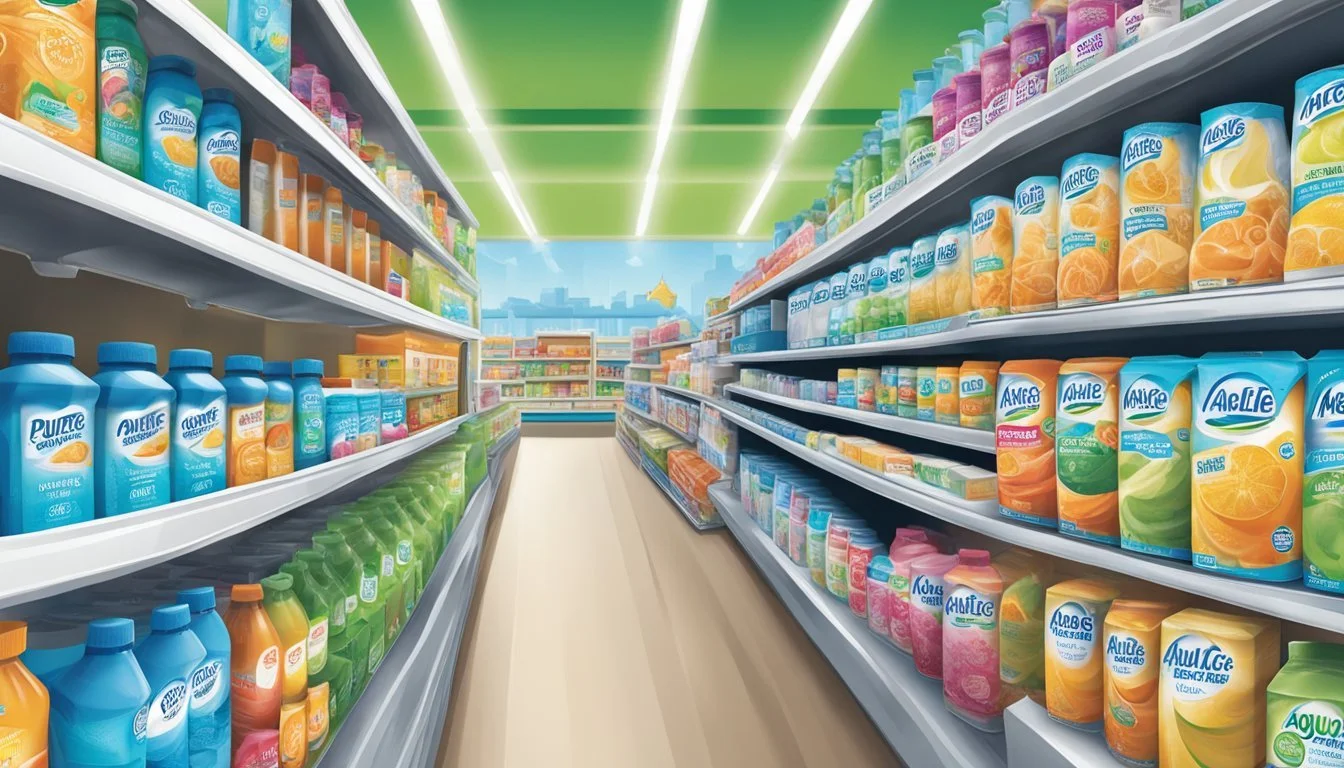Nestle Pure Life vs. Aqua Carpatica
Comparing Quality and Taste
When it comes to bottled water, consumers often find themselves choosing between well-known brands like Nestlé Pure Life and newer, premium options like Aqua Carpatica. Each boasts unique qualities that appeal to different preferences and priorities in hydration. For those seeking a reliable and widely available option, Nestlé Pure Life offers purified water that is both ubiquitous and consistent in taste.
On the other hand, Aqua Carpatica positions itself as a premium choice, emphasizing its natural source and purity. This brand claims to have naturally occurring electrolytes and a low sodium content, which some consumers find cleaner and more refreshing. For those prioritizing natural purity and minerality, Aqua Carpatica stands out as a distinguished option.
By examining the qualities, tastes, and sources of these two brands, readers can make an informed decision on which bottled water best meets their hydration needs. Each brand offers distinct advantages that cater to different tastes and health preferences.
Overview of Nestlé Pure Life and Aqua Carpatica
Nestlé Pure Life and Aqua Carpatica are two prominent bottled water brands known for their distinct backgrounds and quality. Nestlé Pure Life boasts a long history of rigorous quality control and widespread availability, while Aqua Carpatica emphasizes its natural spring water sourced from protected environments.
Brand History
Nestlé Pure Life was established in 1998 and has grown to become one of the most trusted bottled water brands worldwide. Originating in Pakistan, the brand expanded rapidly and is now available in 21 countries across Asia, the Americas, Africa, and Europe. Nestlé Pure Life is owned by BlueTriton Brands in North America, following a change in ownership in 2021.
Aqua Carpatica has roots in Romania and markets itself as a premium brand offering naturally sparkling mineral water. It was introduced relatively recently compared to Nestlé Pure Life, but it has quickly gained recognition for its natural qualities and pristine sourcing methods.
Source and Origin
Nestlé Pure Life sources its water from various groundwater sites, ensuring each location meets strict quality standards. The water undergoes multiple stages of purification, including filtration and ultraviolet disinfection, to deliver consistent taste and safety in every bottle.
Aqua Carpatica is sourced directly from natural springs in the Carpathian Mountains in Romania. The water is naturally carbonated and claims to offer a unique composition with low levels of sodium and nitrates. This spring water is heralded for its purity and minimal human interference in its collection process.
Water Quality and Safety Standards
Nestlé Pure Life adheres to rigorous quality checks and purification processes. The brand follows FDA regulations and often exceeds EPA standards for contaminants. The purification process includes carbon filtration, reverse osmosis, and ultraviolet disinfection, ensuring each bottle is free from impurities and safe for consumption.
Aqua Carpatica prides itself on its natural water quality, requiring minimal treatment. The brand actively monitors and maintains high purity levels, leveraging the pristine environment of the Carpathian Mountains. Aqua Carpatica’s strict quality controls ensure the absence of harmful contaminants, making it a trusted option for health-conscious consumers.
Both brands emphasize sustainability and the use of recyclable packaging materials. They are committed to reducing their environmental footprint while delivering high-quality water to consumers.
Composition and Health Benefits
Understanding the mineral content and hydration benefits of Nestlé Pure Life and Aqua Carpatica can guide your choice for optimal health and wellness.
Mineral Content and Electrolytes
Nestlé Pure Life is enriched with essential minerals such as magnesium, calcium, and potassium. These contribute to the water's fresh taste and support overall bodily functions. Magnesium aids in muscle function, while calcium supports bone health. Potassium helps maintain proper fluid balance, which is critical for hydration.
In contrast, Aqua Carpatica is renowned for its nitrate-free composition, ensuring a pure drinking experience. It boasts a balanced mix of electrolytes, including calcium and magnesium, which can enhance energy levels. The absence of nitrates in Aqua Carpatica makes it a healthier option for those concerned about contaminant-free hydration.
Hydration and Bodily Functions
Both Nestlé Pure Life and Aqua Carpatica are effective in promoting hydration. Proper hydration is essential for bodily functions such as temperature regulation, digestion, and joint lubrication. Drinking water with adequate electrolytes can improve cellular hydration, hence enhancing physical performance.
Nestlé Pure Life offers a refreshing option that appeals to many due to its crisp taste. Aqua Carpatica's unique filtration process and natural spring sourcing provide an equally hydrating choice with a priority on purity and wellness. For individuals focusing on health benefits, both brands stand out as they replenish the body effectively while supporting vital functions.
Taste Profile Comparison
When comparing the taste profiles of Nestlé Pure Life and Aqua Carpatica, factors like flavor characteristics and blind taste test results are crucial. Evaluations should consider nuances such as aftertaste and the refreshing quality of each brand.
Flavor Characteristics
Nestlé Pure Life is known for its clean, neutral taste. It is categorized as purified water, meaning it undergoes a significant filtration process that removes most minerals and contaminants. As a result, some might find it lacks the mineral taste present in spring waters like Evian or Fiji.
Aqua Carpatica, sourced from natural springs, tends to have subtle mineral notes. The presence of minerals like calcium and magnesium can offer a slightly richer flavor compared to the purified taste of Nestlé Pure Life. Aqua Carpatica is often described as smooth with a crisp finish, providing a refreshing experience that appeals to those who appreciate mineral richness.
Blind Taste Test Results
In blind taste tests, Nestlé Pure Life often ranks as a reliable but average-tasting water. For instance, it has been noted for being free of any strong flavors, making it a safe choice for individuals preferring a neutral taste. The lack of aftertaste can make it a go-to option for water sommelier recommendations focusing on purity.
Aqua Carpatica, on the other hand, often performs well in blind taste tests. Participants frequently note its refreshing quality, attributed to its natural mineral content. It has been compared favorably against other premium brands like Evian and Fiji, and testers often commend its mildly mineral taste and clean aftertaste.
Overall, both brands present distinct taste profiles that cater to different preferences, with Aqua Carpatica offering a more mineral-rich experience and Nestlé Pure Life providing a clean, neutral option.
Environmental and Sustainability Considerations
Environmental impact and sustainability are important factors when evaluating bottled water brands. Assessing the bottling and packaging impact and water source conservation are crucial in understanding their overall footprint.
Bottling and Packaging Impact
Nestlé Pure Life uses PET plastic bottles, which are recyclable but often end up as waste. While PET can be recycled multiple times, its improper disposal can significantly harm the environment.
Aqua Carpatica often opts for glass bottles, which are recyclable and reusable. However, manufacturing and transporting glass can consume more energy compared to plastic, affecting its environmental friendliness. Despite being easier to recycle, glass also requires more resources in production.
Both brands promote recycling, yet the effectiveness varies based on consumer behavior and local recycling facilities. Nestlé Pure Life provides accessible information about its packaging materials to encourage responsible disposal. Aqua Carpatica's use of glass may appeal to consumers prioritizing recyclability, though it could have a higher carbon footprint due to energy-intensive processes.
Water Source Conservation
Nestlé Pure Life sources water from multiple locations, including springs and municipal supplies. The company discloses its sources and treatment methods, offering transparency about water quality. However, using diverse sources raises concerns about the depletion of local water supplies and long-term sustainability.
Aqua Carpatica draws water from natural springs in the Carpathian Mountains, emphasizing purity and mineral content. The brand highlights its commitment to protecting natural aquifers through sustainable extraction practices. This focus on regional springs helps maintain the balance of local ecosystems.
Conservation efforts by both brands include monitoring extraction rates and ensuring minimal impact on surrounding environments. Consumers looking for sustainable choices may prefer brands with clear commitments to protecting water sources. Both Nestlé Pure Life and Aqua Carpatica make efforts to minimize their environmental footprint through various sustainability initiatives.
Purification and Filtration Processes
Both Nestlé Pure Life and Aqua Carpatica are known for their detailed purification processes. These processes are crucial in ensuring the water's quality, taste, and safety for consumption.
Reverse Osmosis and Other Techniques
Nestlé Pure Life employs a meticulous purification process, including microfiltration, reverse osmosis, and additional filtration techniques. Microfiltration removes large particles and impurities. Reverse osmosis further purifies the water by forcing it through a semipermeable membrane, which eliminates contaminants such as bacteria and dissolved solids. This step ensures the highest level of purity. Nestlé's process includes Hydro-7, which involves seven stages to enhance the water's quality.
Aqua Carpatica takes a different approach. It sources its water from natural springs in the Carpathian Mountains, minimizing the need for extensive purification. The water undergoes natural filtration through volcanic rocks, which helps maintain its mineral content. UV light treatment is used to ensure safety without altering the water's natural properties. This process keeps the water's natural minerals intact while ensuring purity.
Comparison of Bottling Practices
Nestlé Pure Life has a rigorous bottling process designed to maintain quality and safety. After the purification steps, the water goes through a series of checks, including microbiological testing, before bottling. The water is bottled using aseptic techniques to prevent contamination. Nestlé also enhances its water with minerals to improve taste, ensuring a consistent product with every bottle.
Aqua Carpatica focuses on preserving the natural quality of its spring water. After minimal necessary purification, the water is bottled directly at the source. This method maintains the water's natural mineral balance, which many consumers find appealing. The bottling process at Aqua Carpatica is designed to ensure that the natural properties of the spring water are unchanged, providing a product that is as close to its natural state as possible.
Both brands have stringent quality control measures, but their approaches to achieving purified and high-quality bottled water vary significantly.
Market Presence and Consumer Perception
Nestlé Pure Life and Aqua Carpatica have distinct market positions and consumer perceptions. The comparison focuses on brand reputation, recognition, sales, and distribution.
Brand Reputation and Recognition
Nestlé Pure Life is a product of Nestlé Waters, the largest bottled water corporation globally. This vast network affords it significant brand recognition. Consumers frequently associate Nestlé Pure Life with reliability and availability.
Aqua Carpatica, though not as globally recognized, has carved out a niche market. Its branding emphasizes natural spring sourcing and minimal pollutant content, which appeals to health-conscious consumers seeking purity in their beverages.
Both brands leverage their unique selling points to build their reputations. Nestlé Pure Life focuses on its expansive reach and trustworthiness, while Aqua Carpatica zeroes in on natural purity and regional strength.
Comparative Sales and Distribution
Nestlé Pure Life benefits from the extensive distribution channels of Nestlé Waters. It is widely available across supermarkets, convenience stores, and online platforms, making it a convenient choice for everyday hydration.
Aqua Carpatica, with a more niche market, has comparatively limited but growing availability. It is often seen in specialty stores and health-focused retailers. Sales numbers may not rival Nestlé Pure Life, yet its dedicated consumer base ensures steady demand.
Both brands exhibit strong market presence through strategic distribution, with Nestlé Pure Life focusing on wide accessibility and Aqua Carpatica targeting specific consumer preferences for natural spring water.
More About Nestle Pure Life
Acqua Panna vs Nestle Pure Life: Which Bottled Water is Better?
Aquafina vs Nestle Pure Life: Which Bottled Water is Better?
Arrowhead vs Nestle Pure Life: Which Bottled Water is Better?
Boxed Water vs Nestle Pure Life: Which Bottled Water is Better?
Core Hydration vs Nestle Pure Life: Which Bottled Water is Better?
Deer Park vs Nestle Pure Life: Which Bottled Water is Better?
Essentia vs Nestle Pure Life: Which Bottled Water is Better?
Ice Mountain vs Nestle Pure Life: Which Bottled Water is Better?
Icelandic Glacial vs Nestle Pure Life: Which Bottled Water is Better?
Just Water vs Nestle Pure Life: Which Bottled Water is Better?
Mountain Valley Spring Water vs Nestle Pure Life: Which Bottled Water is Better?
Nestle Pure Life vs 1907water: Which Bottled Water is Better?
Nestle Pure Life vs 7-Select: Which Bottled Water is Better?
Nestle Pure Life vs Alkaline88: Which Bottled Water is Better?
Nestle Pure Life vs Antipodes: Which Bottled Water is Better?
Nestle Pure Life vs Big Chill: Which Bottled Water is Better?
Nestle Pure Life vs BodyArmor: Which Bottled Water is Better?
Nestle Pure Life vs Cascade Mountain: Which Bottled Water is Better?
Nestle Pure Life vs Castle Rock: Which Bottled Water is Better?
Nestle Pure Life vs CBD Living: Which Bottled Water is Better?
Nestle Pure Life vs Crystal Geyser: Which Bottled Water is Better?
Nestle Pure Life vs Crystal Lake: Which Bottled Water is Better?
Nestle Pure Life vs Essence pH10: Which Bottled Water is Better?
Nestle Pure Life vs Hawaii Volcanic: Which Bottled Water is Better?
Nestle Pure Life vs Hawaiian Springs: Which Bottled Water is Better?
Nestle Pure Life vs Kirkland Signature: Which Bottled Water is Better?
Nestle Pure Life vs Liquid Death: Which Bottled Water is Better?
Nestle Pure Life vs Mananalu: Which Bottled Water is Better?
Nestle Pure Life vs Open Water: Which Bottled Water is Better?
Nestle Pure Life vs Poland Spring: Which Bottled Water is Better?
Nestle Pure Life vs Proud Source: Which Bottled Water is Better?
Nestle Pure Life vs Pure Life: Which Bottled Water is Better?
Nestle Pure Life vs Purely Sedona: Which Bottled Water is Better?
Nestle Pure Life vs Refreshe: Which Bottled Water is Better?
Nestle Pure Life vs Richard's Rainwater: Which Bottled Water is Better?
Nestle Pure Life vs San Pellegrino: Which Bottled Water is Better?
Nestle Pure Life vs Simple Truth: Which Bottled Water is Better?
Nestle Pure Life vs Smartwater: Which Bottled Water is Better?
Nestle Pure Life vs Solan de Cabras: Which Bottled Water is Better?
Nestle Pure Life vs Talking Rain AQA: Which Bottled Water is Better?
Nestle Pure Life vs The Well: Which Bottled Water is Better?
Nestle Pure Life vs Topo Chico: Which Bottled Water is Better?
Nestle Pure Life vs Tru Alka: Which Bottled Water is Better?
Nestle Pure Life vs Weird Water: Which Bottled Water is Better?
Nestle Pure Life vs Whole Foods 365: Which Bottled Water is Better?
Nestle Pure Life vs Whole Foods Italian Still Mineral water: Which Bottled Water is Better?
Nestle Pure Life vs Zephyrhills: Which Bottled Water is Better?
More About Aqua Carpatica
Acqua Pana vs Aqua Carpatica: Which Bottled Water is Better?
Aqua Carpatica vs Alkaline88: Which Bottled Water is Better?
Aqua Carpatica vs Cascade Mountain: Which Bottled Water is Better?
Aqua Carpatica vs Castle Rock: Which Bottled Water is Better?
Aqua Carpatica vs CBD Living: Which Bottled Water is Better?
Aqua Carpatica vs Crystal Geyser: Which Bottled Water is Better?
Aqua Carpatica vs Crystal Lake: Which Bottled Water is Better?
Aqua Carpatica vs Essence pH10: Which Bottled Water is Better?
Aqua Carpatica vs Hawaii Volcanic: Which Bottled Water is Better?
Aqua Carpatica vs Hawaiian Springs: Which Bottled Water is Better?
Aqua Carpatica vs Kirkland Signature: Which Bottled Water is Better?
Aqua Carpatica vs Liquid Death: Which Bottled Water is Better?
Aqua Carpatica vs Open Water: Which Bottled Water is Better?
Aqua Carpatica vs Proud Source: Which Bottled Water is Better?
Aqua Carpatica vs Purely Sedona: Which Bottled Water is Better?
Aqua Carpatica vs Richard's Rainwater: Which Bottled Water is Better?
Aqua Carpatica vs Simple Truth: Which Bottled Water is Better?
Aqua Carpatica vs Solan de Cabras: Which Bottled Water is Better?
Aqua Carpatica vs Talking Rain AQA: Which Bottled Water is Better?
Aqua Carpatica vs Weird Water: Which Bottled Water is Better?
Aqua Carpatica vs Whole Foods 365: Which Bottled Water is Better?
Aqua Carpatica vs Whole Foods Italian Still Mineral water: Which Bottled Water is Better?
Boxed Water vs Aqua Carpatica: Which Bottled Water is Better?
Core Hydration vs Aqua Carpatica: Which Bottled Water is Better?
Ice Mountain vs Aqua Carpatica: Which Bottled Water is Better?
Icelandic Glacial vs Aqua Carpatica: Which Bottled Water is Better?
Just Water vs Aqua Carpatica: Which Bottled Water is Better?
Mountain Valley Spring Water vs Aqua Carpatica: Which Bottled Water is Better?
Poland Spring vs Aqua Carpatica: Which Bottled Water is Better?
San Pellegrino vs Aqua Carpatica: Which Bottled Water is Better?
Smartwater vs Aqua Carpatica: Which Bottled Water is Better?
Topo Chico vs Aqua Carpatica: Which Bottled Water is Better?
Zephyrhills vs Aqua Carpatica: Which Bottled Water is Better?








